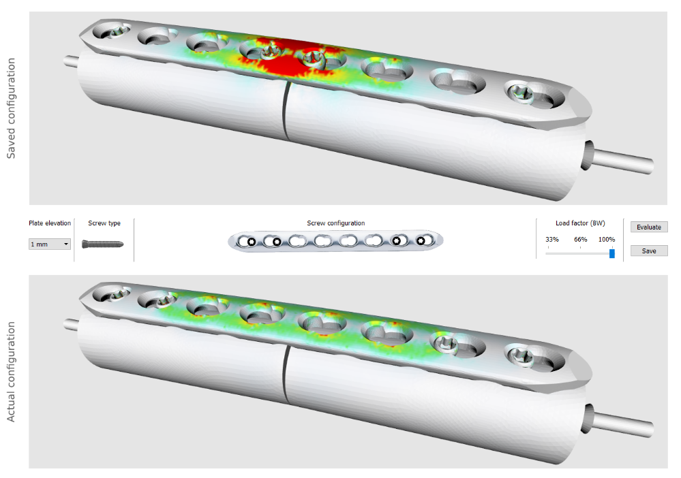Virtual plate fixation of long bone fractures for educational purposes
Background
Failure of internal fixations is to a large extent due to incorrect surgical techniques and basic technical errors. The rate of fixation failures could be reduced by appropriate pre-operative planning and adhering to the principles of fracture fixation. These principles are usually well taught and learnt, but an in-depth understanding of the underlying biomechanical relationships is often missing. Better biomechanical understanding is expected to help surgeons interpret correctly the fracture situation, develop a successful fixation strategy and avoid pitfalls. Textbook-based (passive) learning may be ineffective, while hands-on (active learning) courses are limited in availability and scope. A virtual learning platform could be utilized as a complementary approach to fill this experiential gap.
Goal
To develop the pilot version of an interactive software tool to demonstrate the biomechanical principles of plate fixations of long bone fractures and to foster the understanding of surgeons.
Results
A functional prototype of the virtual osteosynthesis software tool has been developed. The prototype offers in an interactive and intuitive virtual environment where the user can freely configure the plate fixation in abstracted but relevant fracture situations. The adjustable variables include selection of the fracture type, size and location of the plate, types and positions of the screws, and mode and magnitude of loading. The main outcomes focus on within-implant stresses and interfragmentary motions and deformations, allowing the user to recognise and reduce the risk of implant failure, and to optimize theoretically the mechanical stimuli for bone healing, respectively. The results corresponding to the selected fixation configuration become immediately available from the underlying finite element simulation database. Besides fostering self-driven learning and understanding of the basic principles such as plate working length, the tool includes a tutorial-based directed learning platform. Here, virtual replicates of clinical fixation cases that mechanically failed or led to non-healing are utilized to explain the biomechanical conceptual mistakes that led to the given failure. The tool was showcased during the AO Courses 2019 and received very positive feedback.
-
Partner
Lambert S (MD), University College London Hospital, UK


